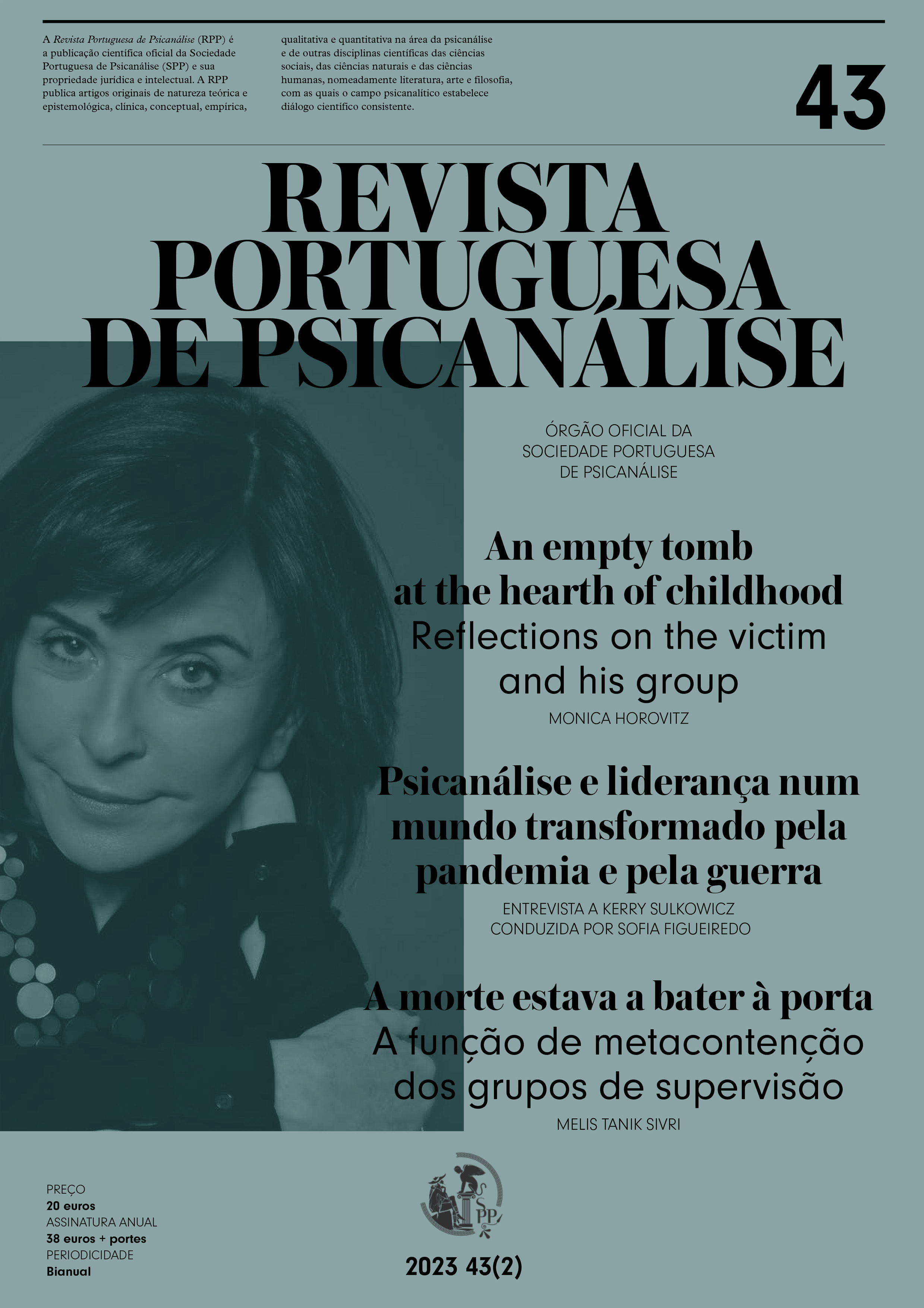An empty tomb at the heart of childhood: Reflections on the victim and his group

Abstract
After presenting a clinical case where we can see how horror invades the mind because it is impossible to contain the experience in a narrative, the author elaborates a psychoanalytic phenomenology of the process of victimization by the victim's own environment. As a result of this designation by the group, the more subjective aspects of this process remain hidden.
The condition of victim does not belong to the subject. It is the group to which the victim belongs to that designates as a victim, or not, the person who has been subjected to violence. A catastrophic rupture disrupts the intra-psychic and interpersonal balances and radically changes the relationship between psychic reality and social reality. These two different realities merge to the point that both subject and group experience a confusion between external and internal worlds. Archaic anxieties are then reactivated, filled with psychotic elements associated with a reaction of suspicion, itself produced by insecurity in the face of the disintegration of all stable references. Danger permeates the most undifferentiated group mentality. This experience, of which nothing can be learned, reinforces the components of omnipotence and strengthens the illusion that it would be possible to avoid all forms of pain.
Keywords
vitimization, individual, group
Author Biography
Monica Horovitz
Membro titular da Societé Psychanalytique de Paris (SPP), da Società Psicoanalitica Italiana (SPI) e da Sociedade Portuguesa de Psicanálise (SPP); membro da Associação Psicanalítica Internacional (IPA).
References
- Arendt, H. ( 1968). Men in Dark Times. Harcourt, Brace,World & Inc.
- Blanchot, M. (1993). The infinite conversation. University of Minnesota Press.